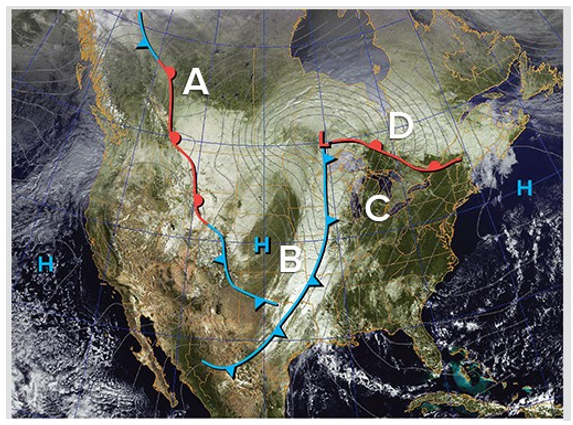Find the largest front located north of the Great Lakes on the map. The likely air mass to the south of this front is a ________ mass that is likely to be ________ than the air mass to the north.

A) mP; moister
B) cP; drier
C) cP; moister
D) mT; moister
D) mT; moister
You might also like to view...
What is a potential solution for reducing flood damage?
A. Draining wetlands to provide dry areas for building B. Clearing forests to provide surface runoff with clear access to streams and rivers C. Living on floodplains to allow surface runoff to quickly drain into rivers D. Taxing development on floodplains E. Eliminating disaster relief
A star's color tells us
A. its surface temperature. B. its rotational speed. C. how much energy a star produces. D. both how much energy it produces and its surface temperature.
The Paleozoic–Mesozoic boundary is a major break in the geologic time scale because
a. it is marked by a mass extinction event. b. it is marked by an explosion in the quantity and diversity of life. c. it is when reptiles first appeared. d. it is when mammals first appeared. e. it is a time of great volcanic activity.
What did Polynesians use to determine if an island was near, but could not be seen yet?
A) The change in the rhythmic set of waves against the hull B) The Flight tracks of birds at dusk C) The Smell of the water D) All of these choices were used